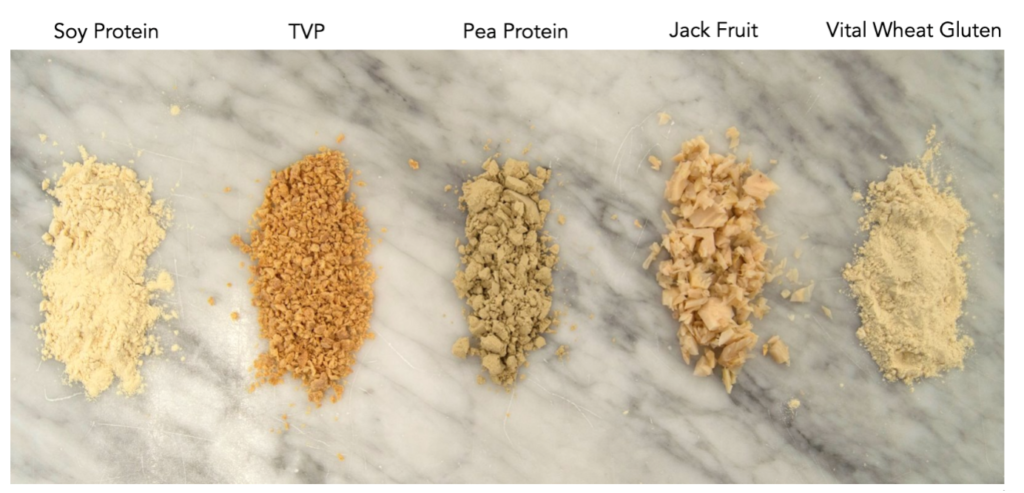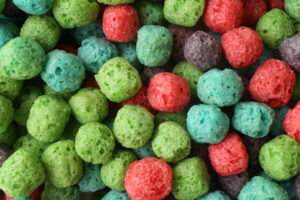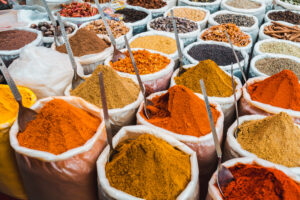A myriad of colors for a bundle of veggie bases
Meat-free products come in a variety of formats and use a variety of base ingredients, all with their own specific requirements. Coloring different plant bases poses different challenges based on the chemical and physical properties of such bases and the desired end color.
The most popular products are general mince, burgers, and sausages that are sold as ‘raw’ products where the consumer cooks them at home with the expectation that they will cook like traditional meat.
Other popular meat-free products such as ready to eat deli slices (e.g. sandwich slices) and seitan are often sold as ‘pre-cooked’ and require longer processing times before they reach the consumer, which will impact the color choice.
In this article, we take you through how to select the best natural color for the base you are working with in your meat alternative product and how to get the best result for both ‘raw’ or ‘cooked’ products.
Considerations for color choice
The first step in choosing a color is understanding how natural colors will fit in with your production process and the desired effect.
Different colors have a varying degree of heat stability, so for a pre-cooked product it is better to select heat stable colors such as caramels or burnt sugars, naturbrown® apple, paprika, curcumin, carotenes, and iron oxides that can withstand the industrial heating process. In sandwich slices, which have a long heating process, iron oxides are often used (where permitted) due to their very good heat stability – red iron oxide is temperature-stable up to 1000ºC!
To compensate for any color loss during the heat process, you may need to overdose certain colors with limited heat stability to achieve the final hue desired.
Another factor that will affect your choice of pigments is pH level. Most meat free products are between pH 5.6 and 6.5. This will discount the use of some color pigments that are pH sensitive, such as anthocyanins.
If you are trying to achieve the raw-to-cooked product, the colors used will need to shift during the at-home cooking process. For this type of products, we typically suggest red beet, burnt sugars, and caramels or combinations of these, which will contribute to the initial red shade and the charred look of the finished product. When coloring different plant bases, the shade can be customized or used to show added flavor by blending in heat stable colors, such as paprika or annatto.
And now to the base
Commonly used base materials for meat free products include textured soy protein, soy isolate, vital wheat gluten, and pea protein, just to name a few. The inherent shade of the base material and their physicochemical properties can help determine the color format, dosage and can influence color selection. As you can see in the image below, some proteins are a neutral white or ivory shade, while others are dark tan or even greenish, both of which require different approaches when adding natural colors.

Tofu
One of the traditional bases used for meat free products is tofu. It is an ideal base for using natural colors because of its white or ivory shade. It can be easily colored either by marinading it whole or as minced granules. Because of its neutral color, it is easy to achieve your desired shade without having to overdose to overcome tan or brown undertones.
Texturized Soy Protein
Texturized Soy Protein comes in different grades from large pieces to granules and is usually a light tan color. To incorporate natural colors, you can add water soluble colors to the marinade used to hydrate and flavor TPV which picks up the liquid for a very realistic meat appearance.
Texturized protein usually has good affinity for both water soluble and oil soluble colors, so there are a lot of options available. Its tan shade may help when coloring the product brown for ‘pre-cooked’ products, but if you are trying to achieve a pink or red shade, you may need to add a bit more color than you would with a white base to overcome the brown undertones.
Soy Isolate/Pea Proteins
Soy isolate, pea proteins, and chickpea or lentil flour, have emulsifying properties and can be colored by using either water or oil-soluble colors, leaving it open for a wide range of color choices. Like other options, the color can be added in the marinade or in any oil used as an ingredient.
Like tofu, the soy protein is fairly neutral in color, so it is generally a great base ingredient to work with for natural colors. It can easily take up the color without additional undertones contributing to the final color.
Pea protein, on the other hand, is a much darker base with tan to green undertones. When adding natural colors, it may be difficult to get the same vibrant shades that are attainable with more neutral bases.
Vital Wheat Gluten
Vital Gluten which is a major fraction of the proteins found in wheat, is tan to light brown in color and is able to absorb both water and oils easily. Water soluble colors can be added to the hydration water, and oil soluble colors can be added with other fats, oily ingredients or condiments. As the strands in the gluten are developed by kneading, an interesting marbling effect can be achieved, caused by the differentiated affinity to color of the exposed surfaces.
Because of its natural tan undertones, you may need to overdose your color to achieve the right pink to red shade.
Color Format
Water and oil soluble colors, as well as emulsions, can be used to impart color to plant protein bases, and in general it is recommended to pre-mix liquid colors with the fluids that are included in the recipe to ensure for a homogeneous distribution. As the proteins hydrate, they will absorb the colors. If using powder colors, these can be dry mixed with the protein and other solid ingredients and will develop their full intensity as the blend hydrates and is mechanically processed (mixed, or kneaded).
Besides proteins, some plant based foods rely on the use of other ingredients to impart the texture or the aspect desired. Hydrocolloid gels are used frequently in seafood alternatives, and these can be colored via the hydration water. Fibrous materials, like Jackfruit, banana flowers, mushrooms, fungal mycelium, or palm hearts will pick up water soluble colors by immersion in a suitable marinade.
In summary, coloring different plant bases for your meat alternative will be a highly personal process. The composition of the base material, its original color, its chemical affinity, and your desired end result will all influence the how you incorporate color. Request a natural color sample kit to get started, or contact us and we can work with you directly to determine the best type of color formulation to be used.






